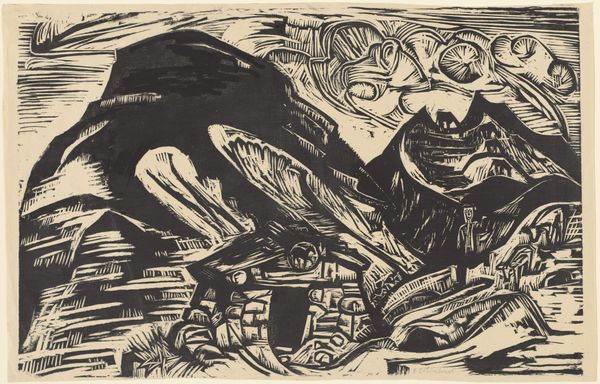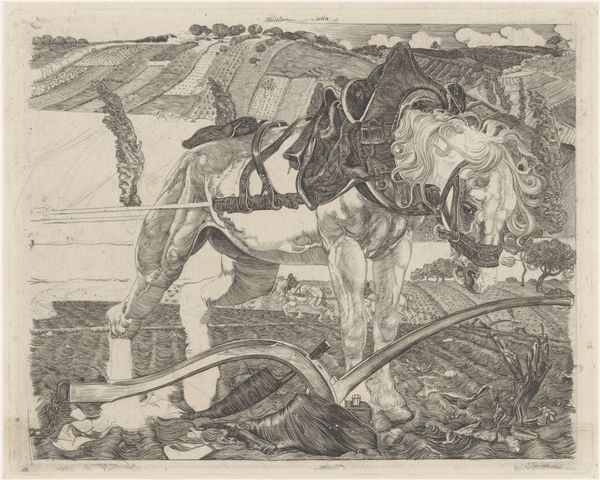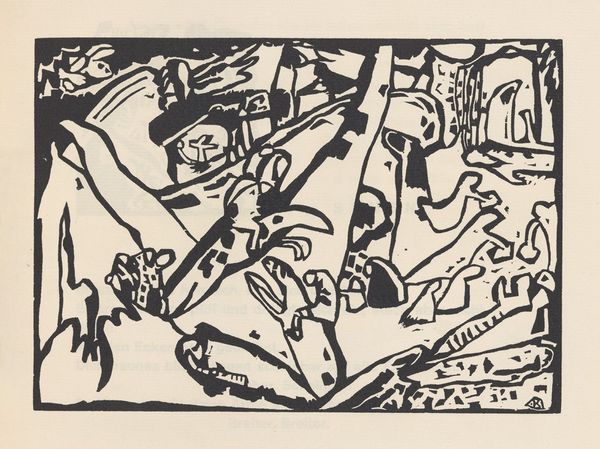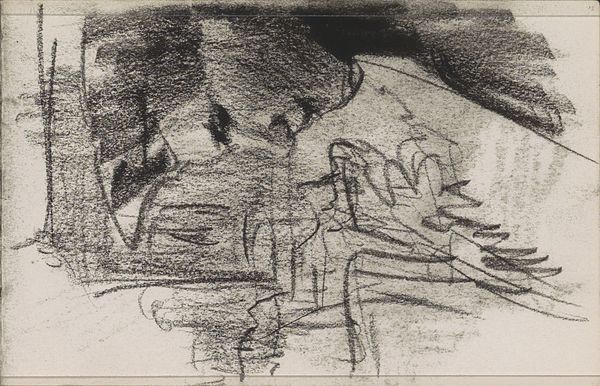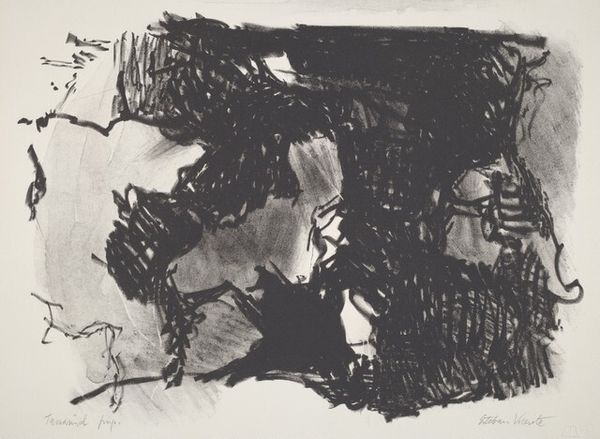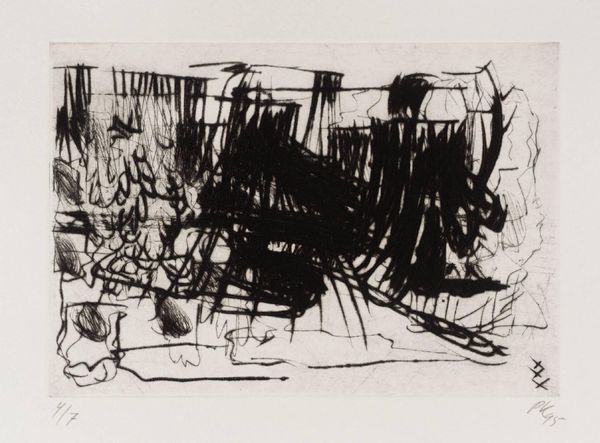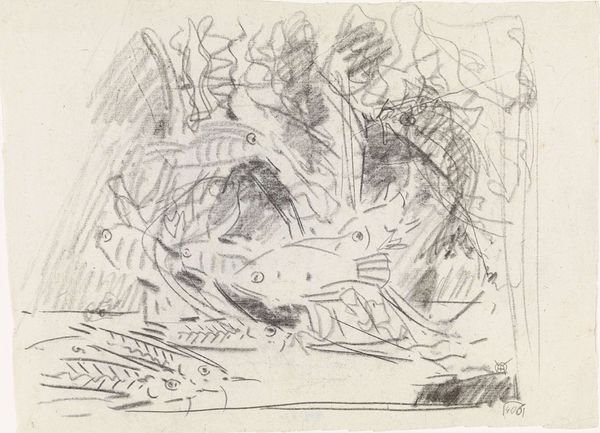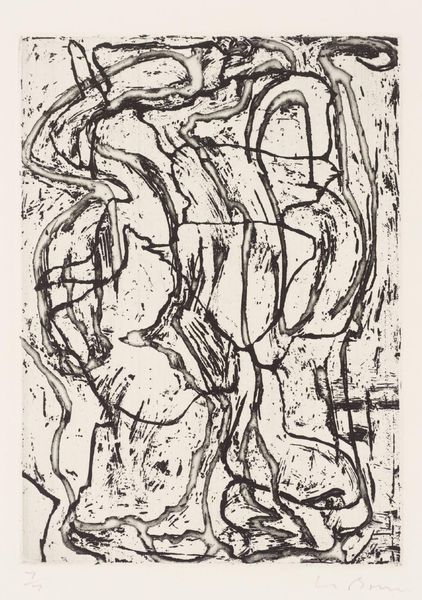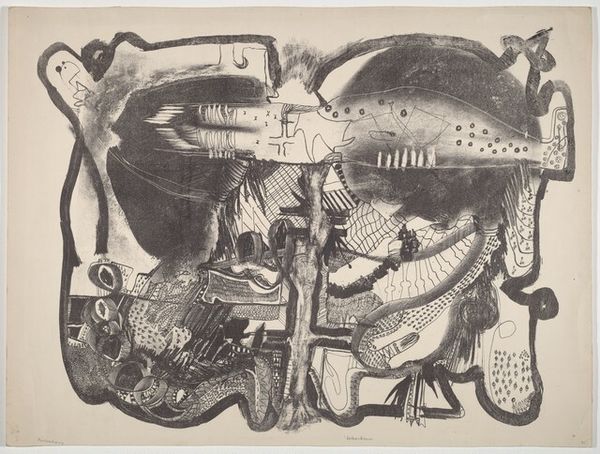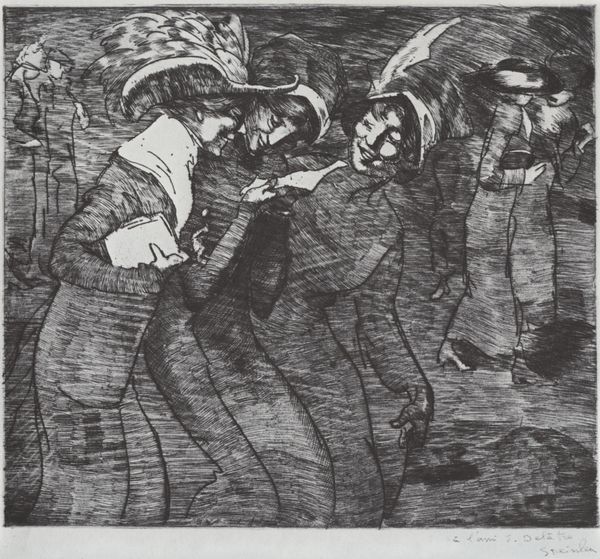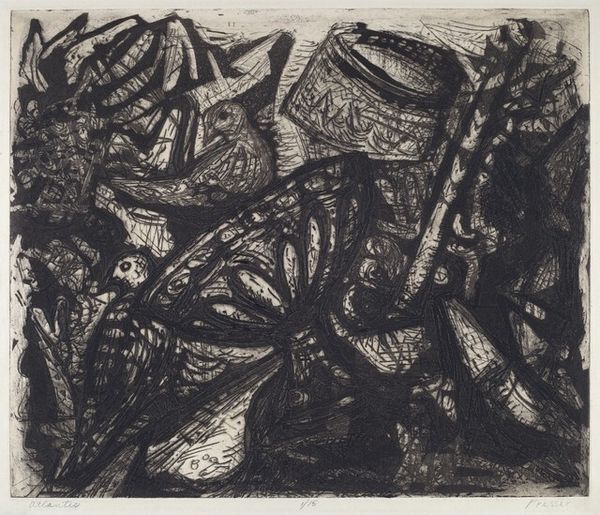
graphic-art, print, ink
#
graphic-art
# print
#
ink
#
abstraction
#
line
Dimensions: overall: 35.8 x 46.9 cm (14 1/8 x 18 7/16 in.)
Copyright: National Gallery of Art: CC0 1.0
Editor: This is Arthur Deshaies' 1961 print, "A Cycle of a Small Sea-Fowl", created with ink. There's a lot of intricate linework, and it's making me think about the processes behind printmaking, with a focus on abstraction. What do you make of it? Curator: This piece really highlights the labor involved in artmaking, especially in printmaking. Look at the sheer amount of etched lines required to create the image. What does it mean that Deshaies chose printmaking—a medium inherently tied to reproduction and dissemination—to depict something as fragile and individual as a "small sea-fowl's cycle"? Editor: That’s a really interesting question! I was so focused on the abstraction that I almost missed the implication of that tension you describe. Does that imply a commentary on the consumption of art itself, or maybe the cyclical nature of artistic production mirroring a natural process? Curator: It could certainly be argued that the material act of creating numerous copies, each slightly unique due to the hand-printing process, draws attention to the artist's labor and the commodification of nature. How do you think the abstraction affects the viewer’s relationship with the subject matter? Editor: Because it's abstract, the "sea-fowl" is less about literal representation and more about capturing the *feeling* or essence of a natural process. The chaotic lines remind me of natural textures or maybe a sense of constant motion of sea life. So in terms of materiality and context, does that then suggest a focus on the raw elements involved? Curator: Exactly. The materials - ink, paper, the etching tools - become active agents in conveying meaning, blurring the boundaries between the artistic subject and the physical reality of its creation. Ultimately, it speaks to the power of the artist's choices and techniques, with the raw materials playing a central role. Editor: This really shifted my perspective on abstract art and the deeper connection it might have to labor and consumption of materials. Thanks! Curator: It’s been a pleasure to explore the material dimensions of Deshaies' work with you.
Comments
No comments
Be the first to comment and join the conversation on the ultimate creative platform.
